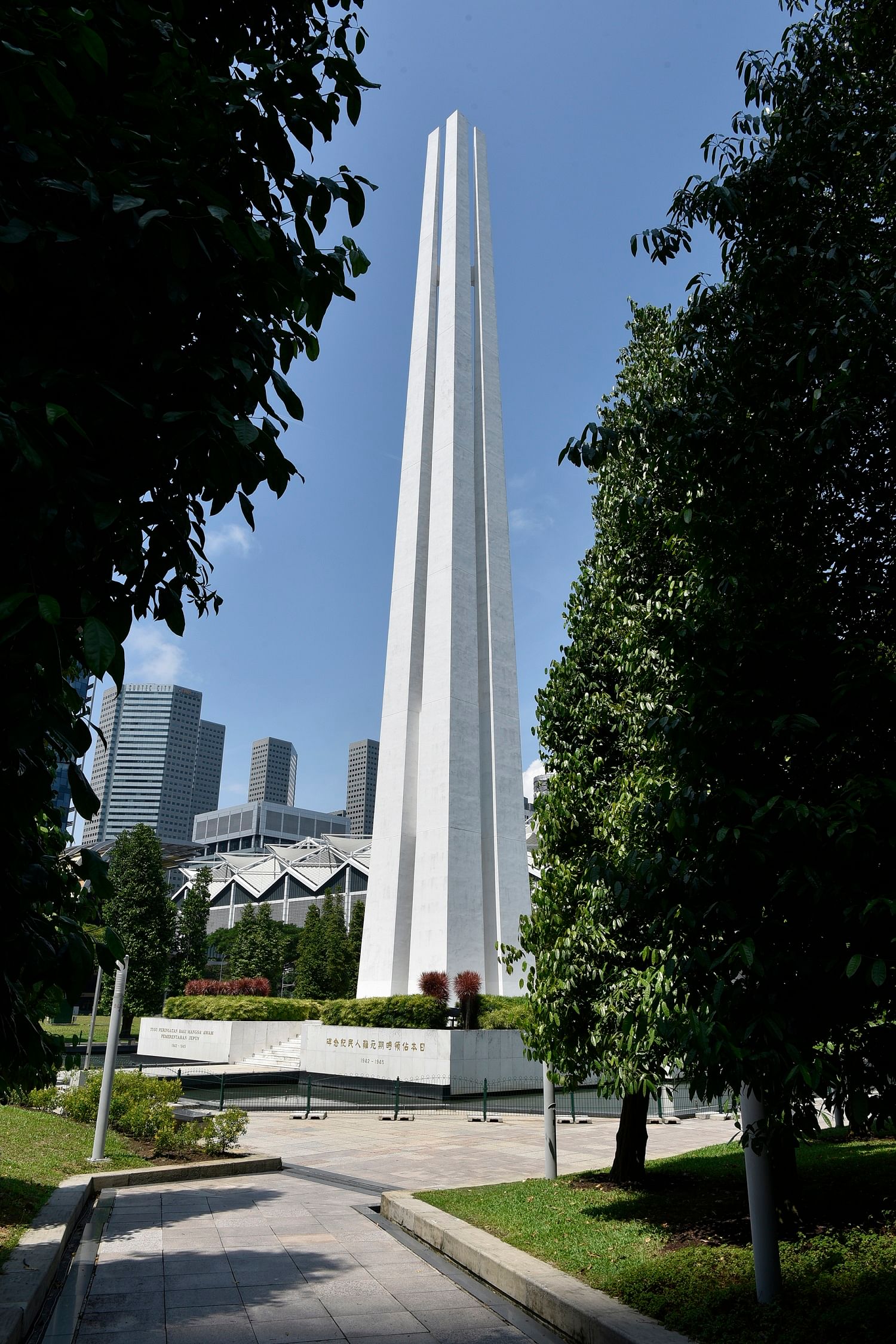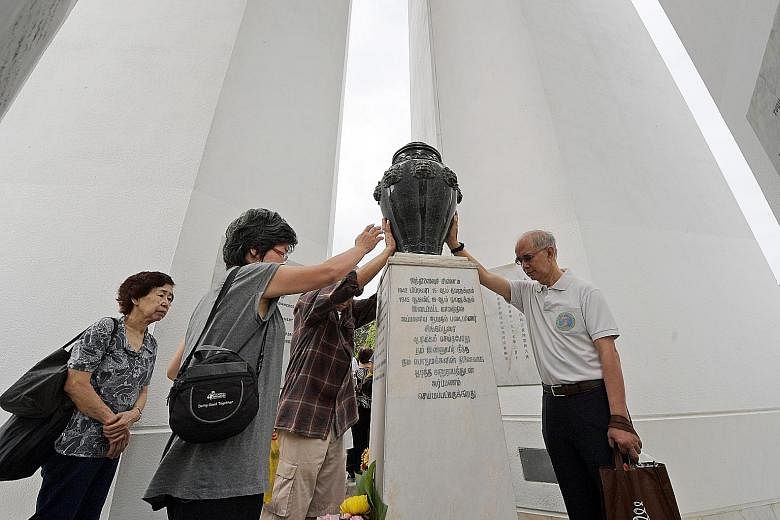As an eight-year-old, Timothy Wong did sentry duty every day. Along with other boys from his village near Bencoolen Street, he would clamber up tall trees to watch out for Japanese soldiers, using hand signals to tell the womenfolk to hide if they were passing through.
Now 79, the retired teacher also recalled how the soldiers would demand food from the various households during the Japanese Occupation in World War II. Boys like him ran from house to house collecting items such as eggs for a neighbour who did not have enough, so that everyone had something to offer the Japanese and could be spared punishment.
"It was risky but we tried our best to help one another. Children were the easiest as helpers because they would not be suspected, unlike the adults," he said.
The erection of the Civilian War Memorial in 1967 thus shook Mr Wong more than a little. Seeing the monument in Beach Road, memories came rushing back: the brutality of the Japanese soldiers then and the hardships the civilian population suffered. For a while, he even avoided buying Japanese products.
With the passing of time, he is now reconciled with what happened seven decades ago. "Let bygones be bygones", he said.
The war memorial, which was gazetted as a national monument on Aug 15, 2013, is one that evokes strong emotions among a swathe of older Singaporeans who lived through the war.
More than a national symbol, the memorial reminds Mr Lim Eng Hock of the father he lost at the age of seven. The 81-year-old retiree still vividly remembers the day Japanese soldiers took his father to Siglap, where he was believed to have been executed.

The war memorial later became his father's final resting place, where the remains of civilians found in areas such as Siglap and Changi are buried.

"That period from 1942 to 1945 is the most painful part of history, and it needs to be remembered," said Mr Lim. "This memorial is an eternal way of remembering what happened, so younger generations never forget Singapore has been through war."
His father was then only 40 years old, running a cake business, when the Japanese rounded up men under the age of 50 to work in Siglap.
"The men stood under the hot sun with no water to drink," Mr Lim recalled. "My mother went to Siglap every day to give him food and drinks."
One day, when his mother made her daily visit to Siglap in the morning, Mr Lim's father told her that she did not have to come anymore, because the Japanese had started feeding them good food that day.
"Little did he know it was his last meal," Mr Lim said. "In the afternoon, when my mother went back to have a look, the grounds were completely empty. The men working there were gone."
For those who lived through the war, the four columns, representing each of Singapore's main racial groups, remind them that today's peace has been hard won, through yesterday's sufferings.
Mr Lee Cheng Hoon, an 81-year-old retired educator, remembers his family being evacuated from their homes so the Japanese could search their possessions. Five families were kept in a small room, where they received only handfuls of rice each day and had to collect trickles of water from a tap.
On their way out, a Japanese soldier tore his father's shirt. Yet, this act of violence ironically saved his father's life.
"When we were returning to our homes, the Japanese soldiers suddenly dragged some men aside and we never saw them again. But my father, with his torn shirt, looked so sad and humble that they let him pass."
Even for those whose family members survived the Occupation, the memories stayed with them.
"Impressions formed as children never really leave us, although I don't like to remember what happened," said Mr R.S. Retnam, 85, who used to work in education.
He was about 10 years old when he heard about the war, and he recalled his parents keeping him from going into the town square, where the heads of executed civilians were displayed by the Japanese.
"If there is ever a reason to remember, it is that we have survived it. It reminds us of what we came out of, as a country, and that is worth keeping in mind."
As for the younger generation, the Occupation is a story told by their grandparents, but one that makes them ponder the origins of the nation.
Said National University of Singapore history major Sarah Teo, 23: "My grandmother often tells me that, because of the hardship and the effort the people put in to fight off the Japanese, many started seeing Singapore as home and decided to settle here instead of returning to China as previously planned.
"The Occupation played a pivotal role in creating national unity and a sense of belonging in Singapore."


